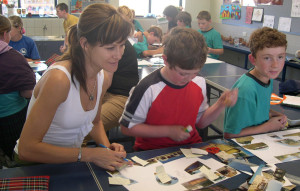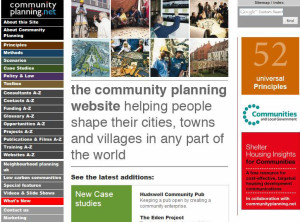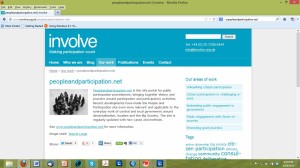Better Together
Last week, an Adelaide-based colleague gave me a copy of Better Together: Principles of Engagement, just published by the South Australian Government.
You can read about it at:
https://saplan.org.au/yoursay and
https://saplan.org.au/better_together
You can also comment. I tried to do that but could not understand how to do it.
A good idea
Still, a good idea and a tick for trying.
As I was preparing a public lecture on community engagement in South Australia, I opened it with great enthusiasm and read it with care. In it, the Premier spoke about breaking down barriers to genuine engagement and that public servants feel that they don’t have permission to engage. They need to try new ways. My shoulders relaxed: a very promising start.
I needed to remind myself, as a person who hasn’t lived in Adelaide for many years, that this is an initiative of a state government eager to remedy many of the community engagement weaknesses of the previous state government. And yes, there is a lot of catching up to do. All my South Australian planning and engagement colleagues admit that. And there’s considerable embarrassment − verging on shame −in the planning profession and in government circles about some of the high-profile debacles of recent years.
It’s like a Leviathan

It’s also easy to attack a large target. Bringing the Leviathan of state government in line with leading practice of community engagement is a formidable talk.
But it’s not rocket science, either.
We must remember that it’s 2013 now and community engagement is a well-established field internationally, with its leading practice, methods, principles, discourses, territories, philosophies and gurus. Australia leads the way in much of this professional work. There is also a lot of expert help around, especially in South Australia. In my view, most of our best engagement practitioners are in South Australia.
It’s important to be up-to-date with community engagement. Policies and approaches no longer need to be brainstormed or invented from first principles. That’s sort of a waste of time and suggests that there may be nothing local or relevant to build on…
There is a frontier. We know where it is.
It’s long and many of us — and many excellent people in South Australia — are working at the growing edge.
Back to Better Together
I read with satisfaction that lots of people have been involved in the workshopping and design of this publication. Big tick.
However, as I read on, I wondered where the engagement specialists in South Australia were when this work was being undertaken”¦ Were they consulted? I doubt it, from the somewhat simplistic approaches in the document, contrasting markedly with the sophistication of much of the on-the-ground work being undertaken in South Australia.
Members of the Senior Management Council (pictured: one lone woman) spoke of their desire to foster a debate-and-decide approach, which, I guess, is a step up from the ever present “DAD” (“Decide-Announce-Defend”) approach that characterised much of previous state government engagement. They want to ensure that the public service has the skills to undertake high-quality engagement processes. Tick.
It was encouraging to see a distinction between communities and stakeholders, as many people confuse the two terms.
IAP2 Spectrum
This document aims to assist in engagement with those who are directly affected and who have personal and professional interests in an issue. The model uses is the IAP2 Spectrum. Again, a tick for a respectable, respected and commonly used model.
The aim is continuous improvement. Unfortunately, some old-fashioned words (such as “audience” and “expectation management”) slipped though the editing net. Perhaps, in the next version, “audience” will become “partners”?
I heard a hopeful tone to the emphasis on reaching community leaders and influencers. And a plea not to “forget local government”. (As if we’d dare!)
Importantly, one should know the history and backgrounds of any engagement situation before starting out. Be wary of over engagement and engagement fatigue. Another big tick, even if it’s somewhat stating the obvious.
Being genuine
Being genuine is one of the guiding principles. Personally, I think it’s safer to specify behaviour than character traits. As an ethicist, I find that virtue ethics is hard to evaluate. And being genuine is very hard to do in some situations. But it’s an admirable aspiration nonetheless. Another tick.
Being creative also gained a guernsey although it was hard to say how that might occur. The literature on creativity in community engagement is clearly yet to be mined by the authors. Next step, I guess.
But a tick for effort. I am looking forward to examples of creativity in the next edition.
For some guidance on what to read, see: https://sarkissian.com.au/publications/community-engagement-books-by-wendy-sarkissian/creative-community-planning/
Social media gained a look-in as it should, as did evaluation, but with little mention of the complex and ongoing discourses regarding evaluation in community engagement. Still, it’s good advice to get in touch with people and be part of a regular mailing list. Medium-sized tick.
Even Better”¦
I was hungry for more when I came to the last page, relishing the stylish graphics and lots of white space.
Maybe in the next version of this promising publication, we could hear something about what’s missing.
Children and young people
I could find not a single word about engagement with children and/or young people.
Cultural diversity did not get a look-in.
Influence
Matters high on the agendas of communities and practitioners (and dominating professional journals and conversations of practitioners like me, as well as in local government), such as inclusion, influence and representativeness, were missing entirely.
The path-breaking, evidence-based work by Roz Lasker and John Guidry on influence by marginalised groups in community engagement (Engaging the Community in Decision Making, 2010) deserves a mention.
See: https://www.amazon.com/Engaging-Community-Decision-Making-Participation/dp/078644312X
There was no consideration of governance issues, including accountability and the structures needed to incorporate communities and their precious local information and local knowledges into decision making. People want more than having their “input” taken “on board”.
National and international polices with which the contents of this publication might align are yet to be identified. Sophisticated approaches to evaluation are yet to come, including the simple (but powerful) notion of using formative as well as summative evaluation.
Resources
It’d be good in the next edition to have links to some leading-practice websites, such as Nick Wates’s generous community planning handbook and website, community planning net:
https://www.communityplanning.net/
Another great source is People and Participation.net:
See: https://www.involve.org.uk/people-and-participation-5-years-on/
It’s changed after five years and is now www.participationcompass.org
And where to go for help?
That’s yet to come.
As is advice about tying this approach to local government plans and polices.
So, from a practitioner looking for guidance: some middle-sized ticks for beautiful graphics, a smashing video and clear, plain language.
And a deep sigh of disappointment that in this day and age − with such urgent planning problems facing us − the wisdom of practice appears to be ignored. Not consulted.
The community of practice
If you’d like to join the community of practice, you can email David Speirs: david.speirs@sa.gov.au
I’ve done that already.
A modest proposal
In the next edition, I’d like to see more respect paid to the existing community of community engagement practice in Australia and especially in South Australia. I’d like to see the next edition acknowledge the wide community engagement literature from practice and theory and the range of professional discourses. A wise approach would be to embed this work in leading practice and align it with the work of community engagement professionals. And it’d be helpful to offer more practical advice. A bit less spin and a bit more substance could work well.
I can think of dozens of people who’d be willing to help get it right, me included.
Postscript: a bouquet
After an excellent discussion with the Deputy Premier, Minister for Planning, John Rau, about this matter in late May and a meeting with Department staff, I am encouraged. I feel as though the Government is now listening — and especially listening to the voices of engagement specialists in South Australia.
I promised no more brickbats.




